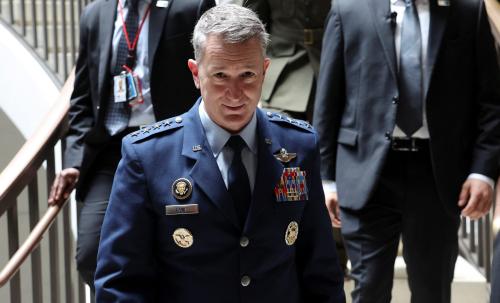After all the bad news from Iraq in recent weeks—the abysmal mistreatment of Iraqi prisoners by American troops, the urban combat in Falluja and Karbala, new polls from Gallup and other organizations showing declining numbers of Iraqis who think their country was better off than before the war, and the fact that there have been more American fatalities since April 1 than there were in last year’s invasion itself—is there anything hopeful to latch onto?
On the security front, a few silver linings can be found. Since our last chart for this page three months ago, there has been a modest decline in crime rates in Baghdad. Kurdistan in the north is relatively peaceful, as is the British sector near Basra in the south (no British soldiers have been killed in Iraq since February). But central Iraq is still very troubled, and President Bush went too far on April 13 when he said that “most of Iraq is relatively stable.”
The economic situation is somewhat better. President Bush may have again been too optimistic in his May 1 radio address when he said that life in Iraq is now “a world away” from what it was under the Saddam Hussein regime. But the material conditions for Iraqis have generally been restored at least to 2002 levels—except for the all-important unemployment rate, which remains far too high.
While the overall situation is disconcerting, there is still hope—especially if the standard for success is defined realistically as an absence of civil war, a gradually improving economy, and slowly declining rates of political and criminal violence. The scheduled transfer of sovereignty to an Iraqi caretaker government on June 30 may at least begin to defuse the growing anti-American anger that is helping fuel the insurgency. And most American assistance, tied up in bureaucratic red tape until now, should begin to jump-start Iraq’s economy in the coming months, with a likely beneficial effect on security as well.
The Brookings Institution is committed to quality, independence, and impact.
We are supported by a diverse array of funders. In line with our values and policies, each Brookings publication represents the sole views of its author(s).



Commentary
Op-edThe State Of Iraq: An Update
May 16, 2004